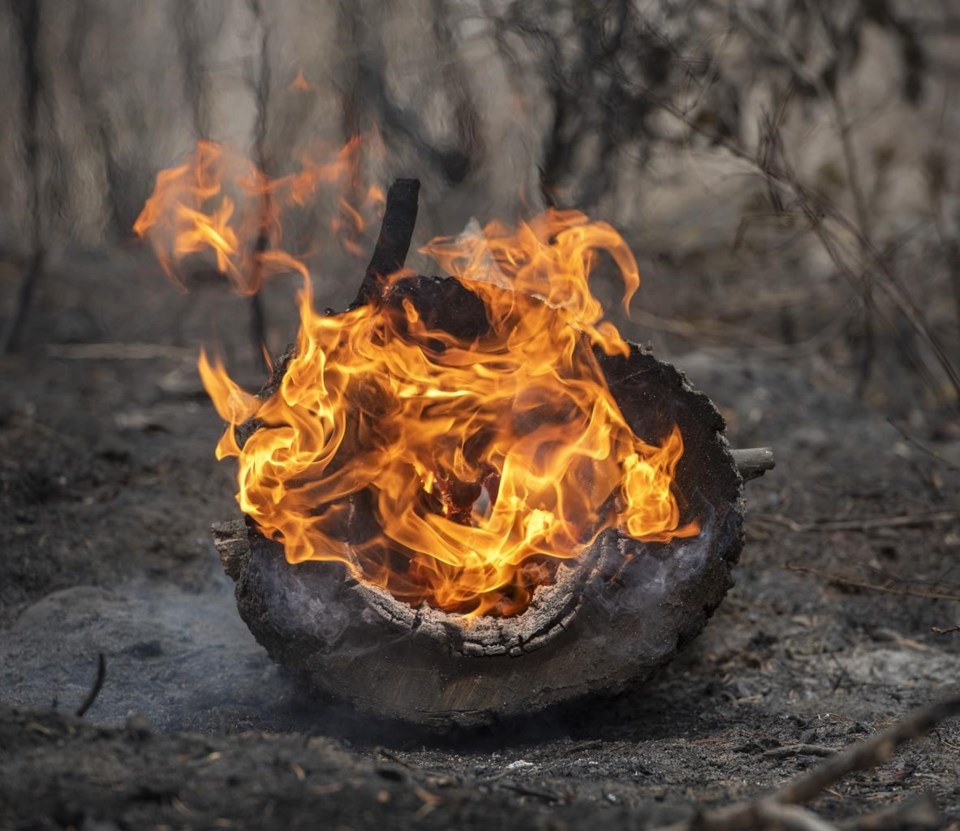ALBUQUERQUE, N.M. (AP) — Members of New Mexico’s congressional delegation are looking for assurances from the U.S. Forest Service that the agency is taking preventative measures to ensure that future prescribed fires don't turn into disasters.
They sent a letter this week to Forest Chief Randy Moore, pointing to the largest wildfire in state history that was sparked last year by the federal government. It charred more than 530 square miles (1,373 square kilometers) of the Rocky Mountain foothills, destroying homes and livelihoods.
“A disaster of this proportion cannot happen again,” U.S. Reps. Teresa Leger Fernández and Gabe Vasquez wrote.
The letter comes as the agency moves ahead with a $1 billion investment to reduce the risk of wildfire across 45 million acres (182,109 kilometers) in the Western U.S. It's a massive undertaking that involves more than 20 landscapes that are considered at highest risk. They stretch from arid New Mexico and Arizona to Idaho and Montana.
The New Mexico lawmakers said they understand the role that prescribed fires will play as land managers look to restore overgrown and unhealthy forests amid climate change.
Still reeling from the damage caused by the Hermits Peak Calf Canyon blaze, they told Moore that trust can be restored in the agency's methods through communication with communities about upcoming burns — and by explaining how protocols have been modified to ensure prescribed fires remain contained.
"The U.S. Forest Service admitted fault, but we have a long way to go before they regain the trust of New Mexicans,” Leger Fernández said in a statement. “This letter requests that the (Forest Service) clearly explain what they plan to change to prevent another grave error like this. Our lands, forests, waters and communities cannot afford anything less, and our people deserve it.”
Moore has yet to issue a formal response to the lawmakers, but he promised in an address earlier this year that collaboration with communities and Native American tribes is a priority for the Biden administration.
Prompted by the New Mexico blaze, the agency last spring halted all prescribed burn operations for 90 days while it conducted a review of procedures and policies. By the end of the moratorium, managers learned that they can't rely on past success, and must continuously learn and adapt to changing conditions, Moore said.
A report on the cause of the New Mexico fire pointed to a series of missteps by the agency, most notably that officials underestimated the amount of timber and vegetation that was available to fuel the flames — and the exceptional, dry conditions that had been plaguing the area for years.
Federal agencies have completed reviews of more than 30 fires between 2017 and 2022, including three in New Mexico.
In 2005, the federal government conducted what officials at the time called the first known attempt to take a comprehensive look at escaped prescribed fires and near misses, reviewing 30 cases to discover recurring lessons, and whether there were emerging trends or gaps in knowledge.
Common problems with the burn plans included complexity, risk assessments and the lack of fire behavior calculations — similar to the issues encountered years later with New Mexico's historic fire.
Forest officials said Wednesday that the planning process for prescribed fires now includes a new template that addresses findings in the 2022 review. Part of that calls for plans to be validated and updated to ensure that the information is current, and the most recent science and modeling is incorporated.
For the most complex projects, there's a new requirement to have additional personnel and equipment on site within 30 minutes. Those contingency resources can help reinforce firelines and mop up.
Drought conditions are also a mandated part of the discussion, and managers have a checklist to go over daily with an agency administrator. Additionally, human factors such as pressure, fatigue and experience are considered, officials said.
Just weeks ago, the Santa Fe National Forest delayed a project to burn debris piles in northern New Mexico due to snow and wind. Managers promised that the burned piles would be monitored closely, and every precaution would be taken to ensure the piles are out before the arrival of spring winds and warming trends.
“As we resumed our prescribed fire programs, we were met with a cooler and wetter winter than last year,” said Ivan Diego Knudsen, a spokesperson for the Southwest region. “The precipitation is much needed, but it can hamper our plans as fire managers prepare for their projects.”
Federal maps show there are pile burns and other prescribed burn operations planned or currently underway across the West.
Between October and the beginning of February, the agency reported that about 515 square miles (1,334 square kilometers) have been treated with prescribed fire — and that number is expected to grow once the results from recent projects in the southern and eastern U.S. are added.
In the Southwest, which includes grasslands in Oklahoma and Texas, prescribed fire has been used on about 32 square miles (83 square kilometers) since the moratorium was lifted last fall.
Susan Montoya Bryan, The Associated Press



